前言Introduction
近半個世紀以來,全球人口不斷增長和城市急速發展,農業、工商業和交通運輸等排放大量溫室氣體,令地球的氣候出現變化。近年,氾濫、旱災、熱浪、熱帶氣旋及寒潮等極端天氣事件增多,反映全球氣候變化有惡化趨勢。
透過收集溫度、雨量、氣壓、濕度、風向和風速等資料,並與歷史數據作比較,我們便可以了解一個地方的氣候狀況和變化。在這次活動中,我們將製作三個簡易的氣象監測工具,包括溫度計、雨量計和風速計,讓同學們自行記錄天氣資料,從而認識香港的氣候變化。
Rapid population growth and urban development have led to increasing emissions of greenhouse gases over the past 50 years. The warming trend gives rise to more extreme weather events including flooding, droughts, heat waves, tropical cyclones and cold waves, which have caused more casualties and economic losses.
Through collecting climatic data and compare them with historical records, we can understand the changing climatic conditions of a place. In this activity, we are going to make three simple meteorological instruments (including a thermometer, a rain gauge and an anemometer) so that we can collect data and know about the changes of Hong Kong’s climate over time.
基礎知識Background knowledge
香港的氣候變化Hong Kong’s climate change
近百多年來,香港由小小的漁村發展成國際大都會,頻繁的工商業活動和龐大的電力消耗使二氧化碳等溫室氣體的排放量不斷上升,加上發展密度高使風速下降,令本港的氣候變得越來越炎熱。
據天文台資料顯示,1885 至 2017 年期間,本港的年平均溫度持續上升,其增幅更自二十世紀後半期開始加快(圖1),使熱夜(日最低溫度 ≥ 28°C)及酷熱(日最高溫度 ≥ 33°C)的日數不斷增加(圖2)。此外,極端降雨事件越發頻密,每小時最高雨量屢破紀錄,對市民的日常生活構成不便(圖3)。 圖4 綜合了香港近數十年的氣候趨勢。
Hong Kong has experienced rapid economic development during the past decades. Together with high density of buildings, urban heat island effect has intensified and made the city warmer and wetter.
According to the Hong Kong Observatory, the annual mean temperature of Hong Kong has increased and its rate of increase has even accelerated since the late 20th century (Fig. 1). This has induced more hot nights (daily minimum temperature ≥ 28°C) and extreme hot days (daily maximum temperature ≥ 33°C) (Fig. 2). The rainfall pattern has become more extreme as well, with new hourly rainfall records observed more frequently in recent years (Fig. 3). Figure 4 summarises the changes of weather elements in recent decades.
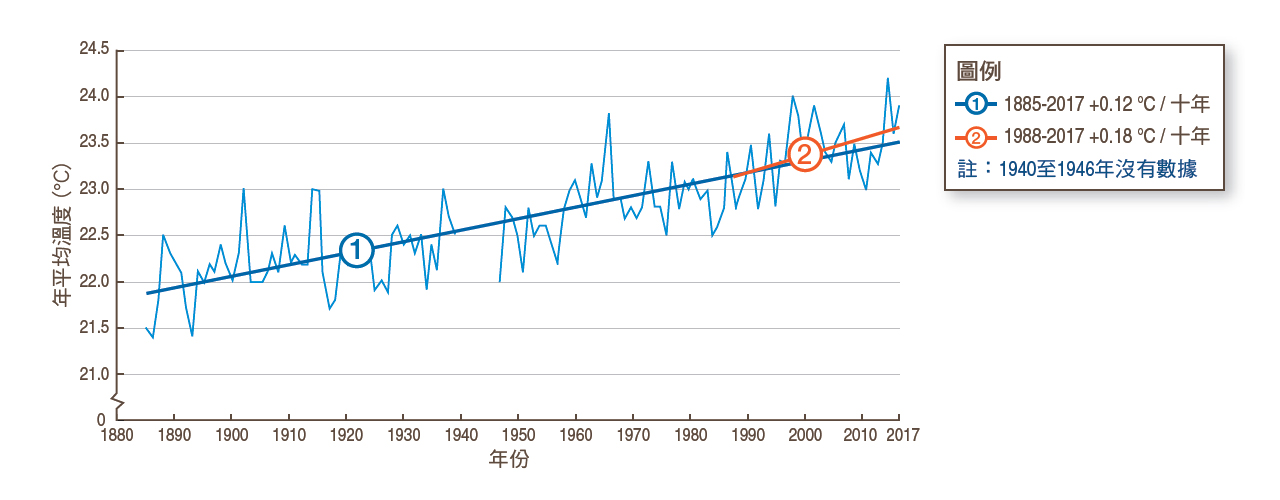
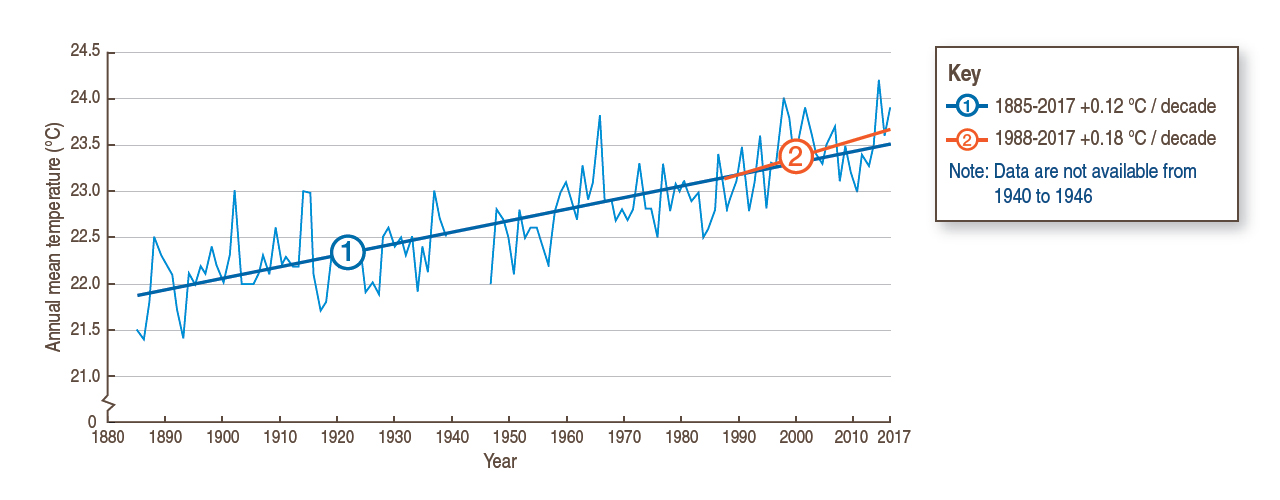
圖11885 至 2017 年香港的年平均溫度
Fig. 1Annual mean temperature of Hong Kong, 1885-2017
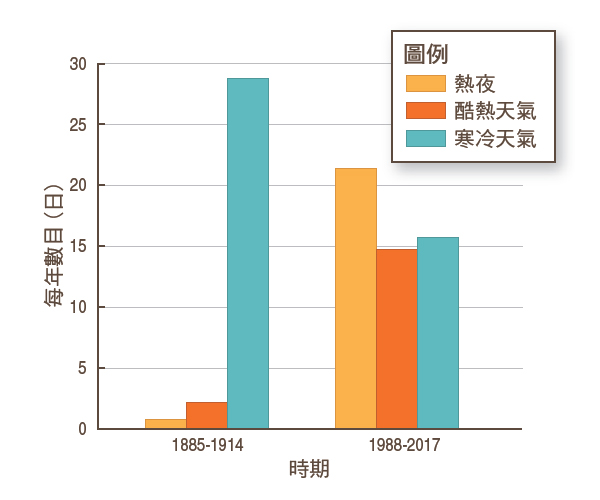
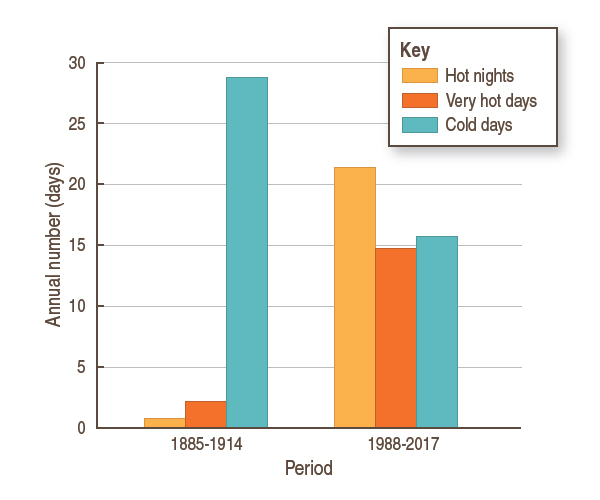
圖21885-1914 年及 1988-2017 年香港每年的熱夜數目和酷熱日數急增,寒冷日數減少
Fig. 2More hot nights and extreme hot days in Hong Kong
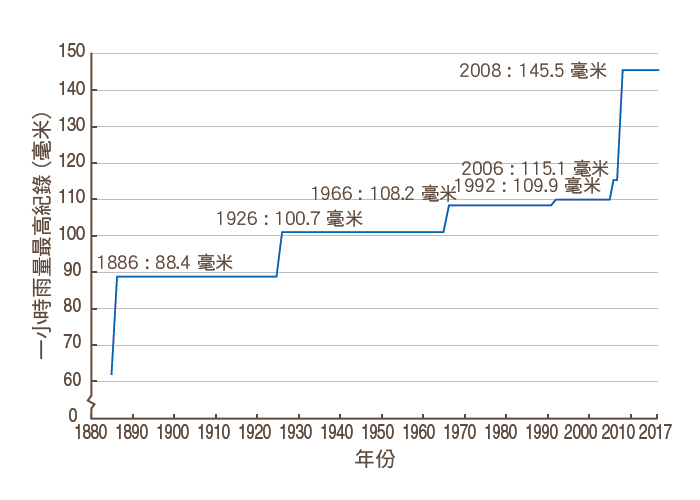
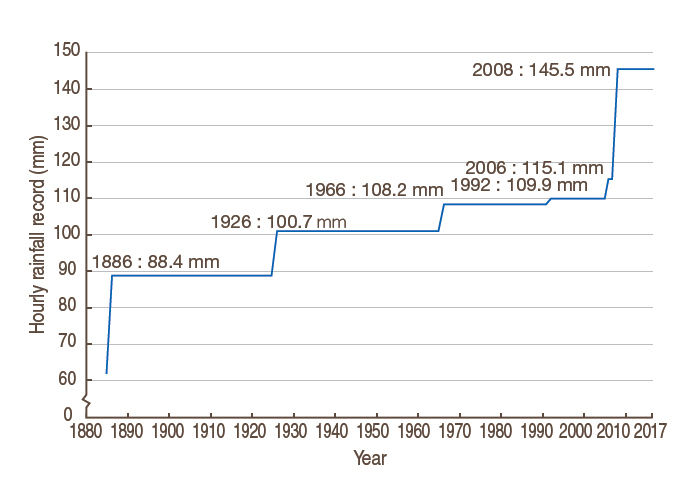
圖31885 至 2017 年香港一小時雨量最高紀錄
Fig. 3Hourly rainfall records of Hong Kong, 1885-2017


圖4香港近數十年的氣候趨勢
Fig. 4Changes of weather elements over time
設計與製作Design and DIY
在這個活動中,你將學習製作三個氣象監測工具,以收集香港的溫度、雨量和風速資料。
In this part, you are going to make the following meteorological instruments.
1. 溫度計1. Thermometer
所需材料:Materials required:
透明瓶子1個
Empty bottle1
透明吸管1枝
Transparent drinking straw1
卡紙1張
Cardboard1
清水半瓶
WaterHalf-bottle full
酒精半瓶
AlcoholHalf-bottle full
透明膠紙1卷
Adhesive tape1
黏土少量
Clay
食用油少量
Cooking oil
食用色素少量
Food colouring
製作步驟:Steps:
- 往透明瓶子注入半瓶清水、半瓶酒精及數滴食用色素,令溶液注滿瓶子。
- 把透明吸管垂直插進瓶子,並以黏土固定。
- 往吸管滴進數滴清水,直至吸管中的溶液水位離瓶口約 5 厘米。
- 往吸管滴進一滴食用油,以防止水分蒸發。
- 用透明膠紙將卡紙固定在吸管上。
- 有需要可調校溫度計。
- Fill the empty bottle, half with water, half with alcohol and a few drops of food colouring.
- Insert a transparent drinking straw into the bottle vertically and fix it with clay.
- Add a few drops of water into the straw until the water level is 5 cm above the bottle mouth.
- Add a drop of cooking oil into the straw to prevent evaporation.
- Use adhesive tape to fix a cardboard to the straw.
- Calibrate the thermometer if necessary.
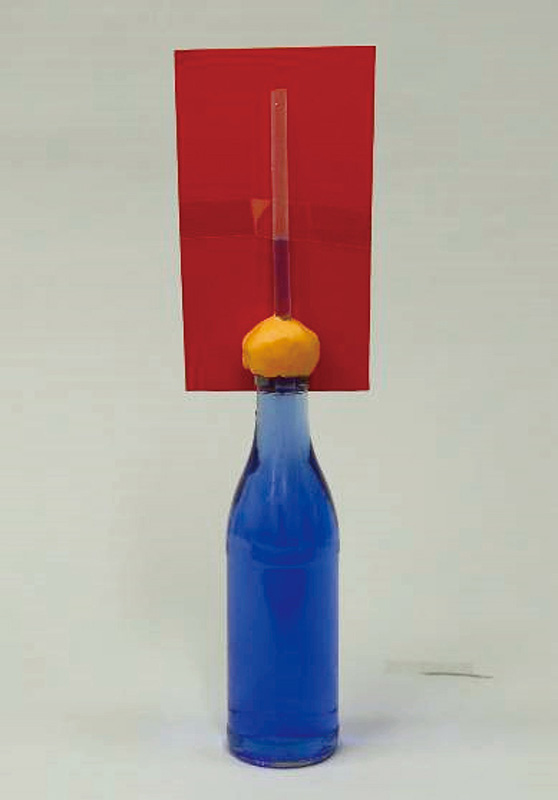

圖5溫度計
Fig. 5Thermometer
2. 雨量計2. Rain Gauge
所需材料:Materials required:
2公升膠瓶1個
2L plastic bottle1
剪刀1把
Scissors1
沙土或小石塊少量
Sand / Pebbles
記號筆1枝
Marker pen1
膠紙1卷
Adhesive tape1
直尺1把
Ruler1
注意事項:
使用剪刀時必須注意安全,可戴上安全手套以免受傷。
Caution:
Be careful when using scissors. You can wear a pair of safety gloves to protect yourself.
製作步驟︰Steps:
- 用剪刀剪掉膠瓶的上小半部(約膠瓶三分之一處)。
- 往膠瓶的下半部放入約 5 厘米高的沙土或小石塊,以確保膠瓶不會因強風和暴雨倒下。
- 往膠瓶加入剛好蓋過沙土或小石塊的水量,使用記號筆畫一條線以記錄水位。
- 用膠紙把直尺貼在膠瓶上,尺子上的刻度「0」應對着記號筆所畫的線。
- 把膠瓶的上小半部倒放在膠瓶中,呈一漏斗狀,並利用膠紙固定其位置,以收集雨水。
- 有需要可調校雨量計。
- Use the scissors to cut off the top of the plastic bottle (about 1/3 from the top).
- Fill the bottom of the bottle with 5 cm depth of sand / pebbles to prevent the bottle from falling over.
- Pour water into the bottle until the water level is just above the sand / pebbles. Mark the water level with a marker pen.
- Paste a ruler on the plastic bottle with the “0” reading pointing to the mark.
- Turn the cut-off part of the bottle upside down to make a funnel. Put it into the bottle and use adhesive tape to fix its position for rainwater collection.
- Calibrate the rain gauge if necessary.
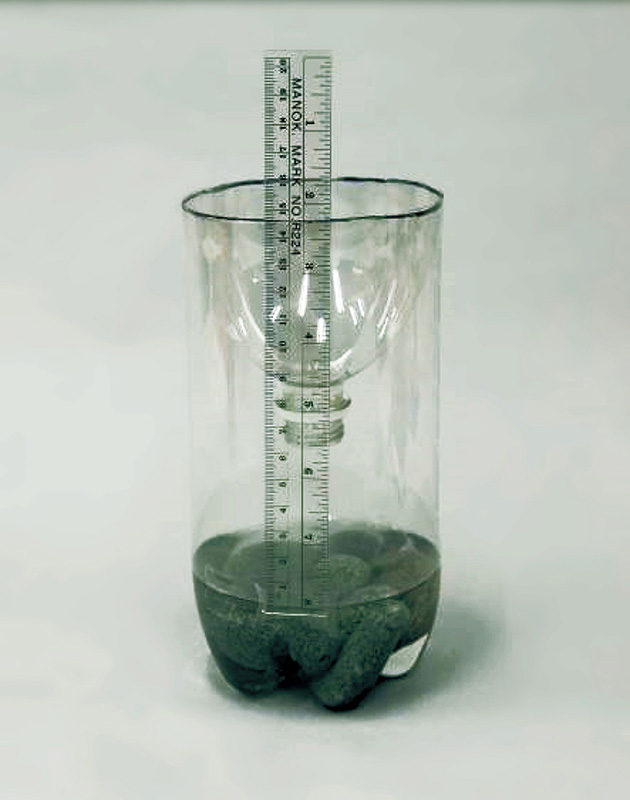

圖6雨量計
Fig. 6Rain gauge
3. 風速計3. Anemometer
所需材料:Materials required:
膠杯5個
Plastic cup5
吸管2枝
Drinking straw2
削尖的鉛筆,橡皮擦於上方1枝
Sharpened pencil with eraser on top1
剪刀1把
Scissors1
注意事項:
使用剪刀時必須注意安全,可戴上安全手套以免受傷。
Caution:
Be careful when using scissors. You can wear a pair of safety gloves to protect yourself.
製作步驟︰Steps:
- 在一個膠杯的杯壁剪四個平均分佈的小孔。
- 把兩枝吸管以架十字的形式穿過小孔,使兩吸管在膠杯的中央重疊,並分成四段等長的吸管。
- 在膠杯底部中央剪一個孔,然後插進鉛筆,令橡皮擦接觸到兩吸管重疊的部分。
- 利用大頭針插入吸管重疊的部分及橡皮擦,以固定吸管和鉛筆。
- 在餘下四個膠杯的杯壁各剪兩個平均分佈的小孔,然後穿過吸管的末端。確保膠杯的排列方向與距離一致。
- 在平坦的表面上放置一些黏土,把鉛筆的尖端插進黏土,確保風速計直立不倒。
- Make four evenly-spaced holes along the edge of a plastic cup.
- Insert two drinking straws through the holes, so that the straws cross over each other at the centre of the cup.
- Make a hole at the centre of the bottom of the cup. Insert a pencil through it with the eraser end on the top.
- Fix the pencil firmly to the two straws by attaching a pin over the intersected part and the eraser.
- Make two evenly-spaced holes along the edge of each of the remaining plastic cups. Hang the cup horizontally by passing the straw through the two holes. Repeat for the other three cups. Make sure the four cups are aligned in the same direction and distance.
- Put some clay on a flat surface. Insert the sharpened end of the pencil into the clay and make sure the whole instrument stands upright firmly.
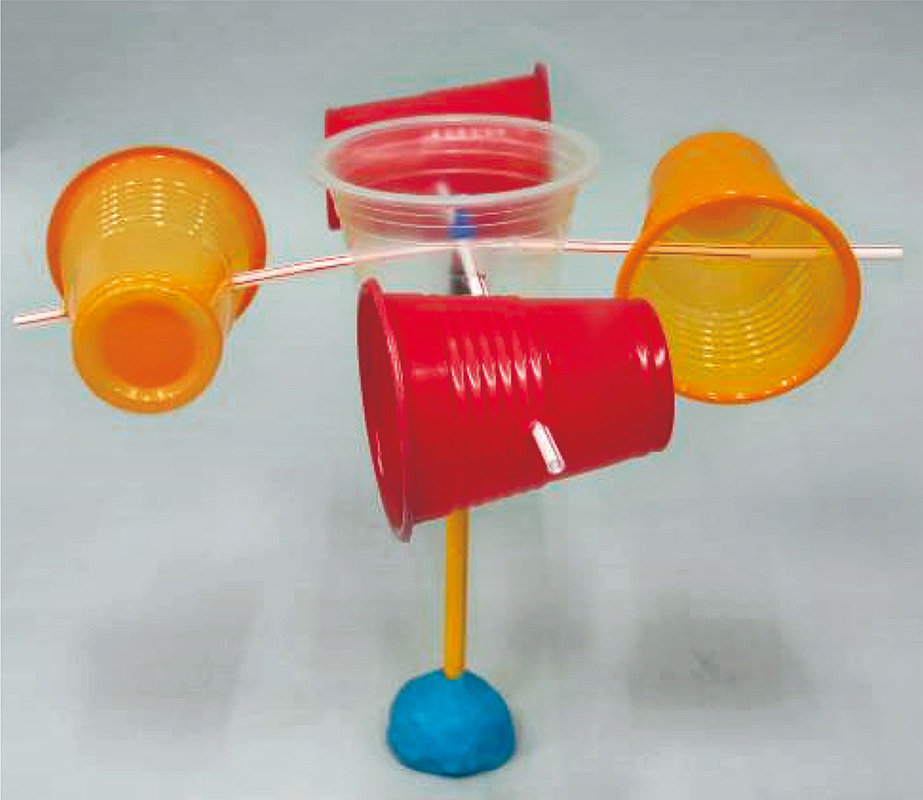
圖7風速計

Fig. 7Anemometer
分享與討論Discussion
1.
每組同學利用所製作的氣象監測工具量度和記錄一個月的天氣資料。
Each group uses its instruments to measure and record the weather data for one month.
a - 溫度Temperature (T)
b - 雨量Rainfall (R)
c - 風速Wind speed (WS)
2.
(a) 每組同學擔當天氣報導員,向全班同學匯報過去一個星期的天氣狀況。
(b) 比較各組之間的數據有何差異,並找出當中的原因。
(a) Each group reports the weather conditions recorded for the past week.
(b) Compare your data with other groups and explain for any variations observed.
3.
每組同學亦可記錄每月的平均天氣資料,計算該年的年平均溫度、雨量和風速。然後瀏覽天文台網站,找出三十年前的天氣資料作比較,以了解香港的氣候變化。
You can also record the weather data for one year and then calculate the annual mean temperature, annual rainfall and average wind speed. By comparing your data with those recorded by the Hong Kong Observatory, you will find out how the climate of Hong Kong has changed over time.
4.
總結香港的氣候有甚麼變化。
Summarise the changes of Hong Kong’s climate.
科技應用Application of technology
1. 立體模型3D Model
如學校有立體打印機,老師可下載可供立體打印的模型,參考網頁指示的設定打印所需模型,例如雨量計模型。若然學生已學會使用立體打印軟件(例如 Blender),可讓他們嘗試更改模型設計,以製作適合自己的雨量計。
If a 3D printer is available in your school, teachers can download the ready-made models for 3D printing from . Follow the instructions provided and print out the models. If the students are familiar with 3D graphic tools (e.g. Blender), encourage them to modify the design of models to enhance their creativity.
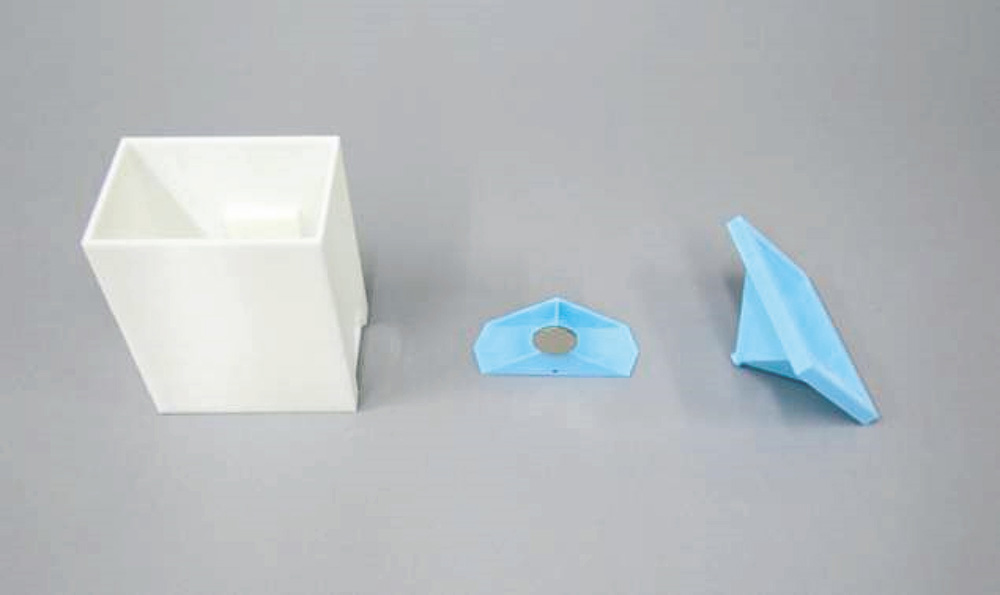

圖8使用立體打印機製作的雨量計模型
Fig. 8Parts of rain gauge printed by a 3D printer
2. Arduino 和霍爾效應感應器Arduino and Hall Effect Sensor
如學校有 Arduino,學生更可將其與立體打印技術結合起來,以獲得更準確的氣候數據。例如將立體打印的雨量計連接至 Arduino 和霍爾效應感應器,以收集雨量數據。
If Arduino is available in your school, students can combine it with 3D printing to enhance the accuracy of data collection. For example, connect a 3D printed rain gauge to Arduino with a Hall effect sensor to measure the amount of rainfall collected.
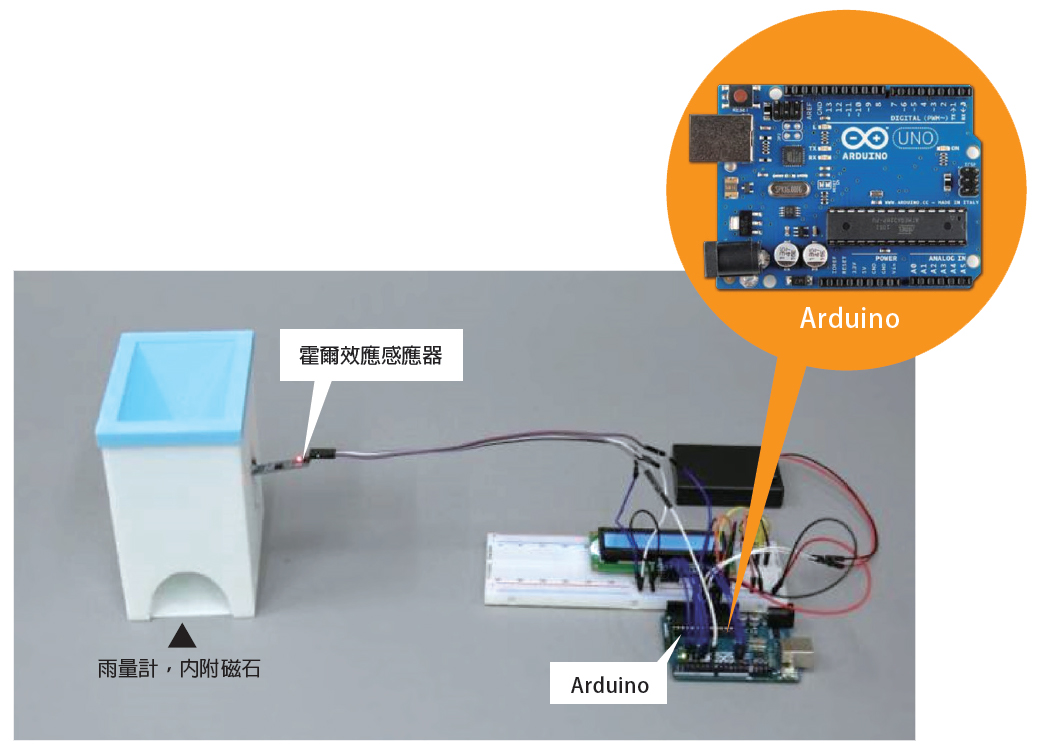
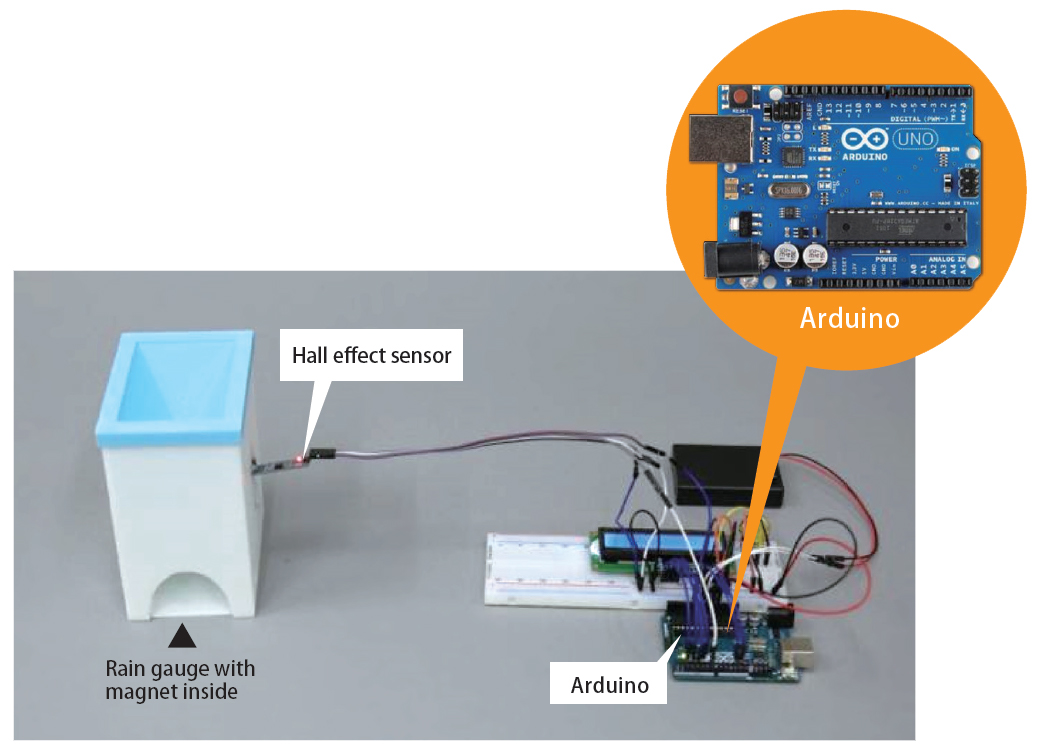
圖9使用 Arduino 和霍爾效應感應器收集雨量數據
Fig. 9Use Arduino with a Hall effect sensor to collect rainfall data
3. 天文台氣象站Meteorological Station of Hong Kong Observatory
香港天文台在各區均設有氣象站,透過利用精密的儀器例如衛星和遙感技術等收集氣候數據,然後進行比較和分析,以監測本港的氣候狀況,並預測未來的氣候變化。
The Hong Kong Observatory has set up several meteorological stations over the territory to collect climatic data. With the help of advanced instruments such as satellites and remote sensing, the data collected is more precise that allows more accurate prediction of Hong Kong’s weather.
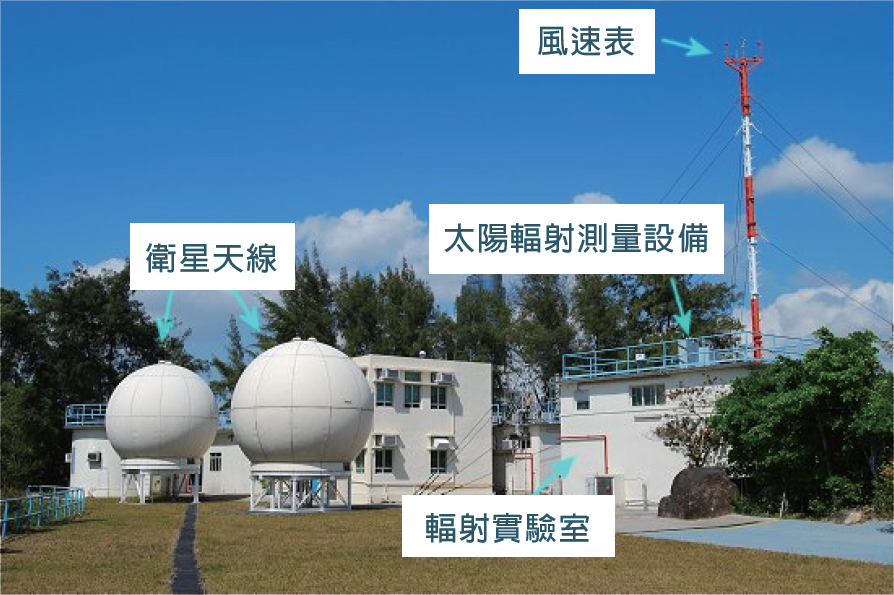
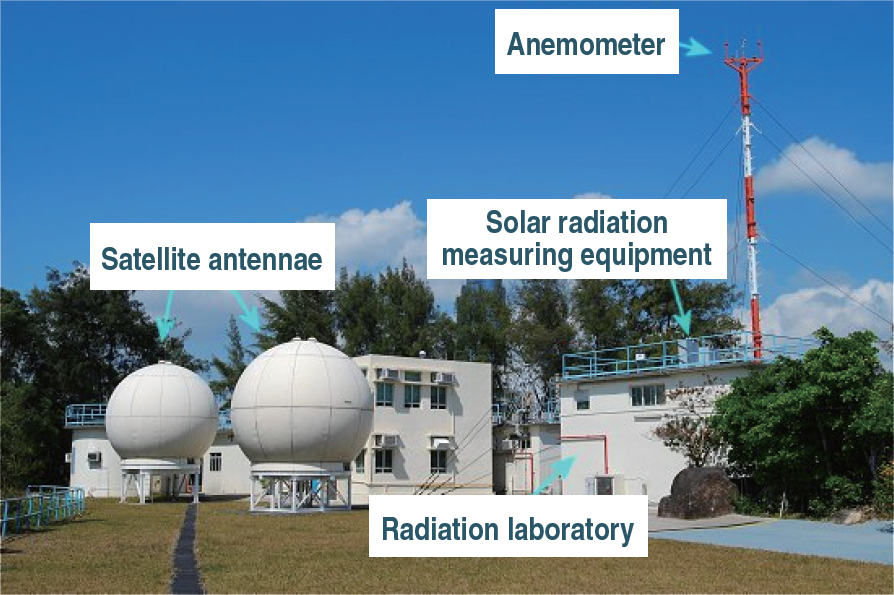
圖片來源:香港天文台
圖10京士柏氣象站
Photo Courtesy: Hong Kong Observatory
Fig. 10King’s Park Meteorological Station